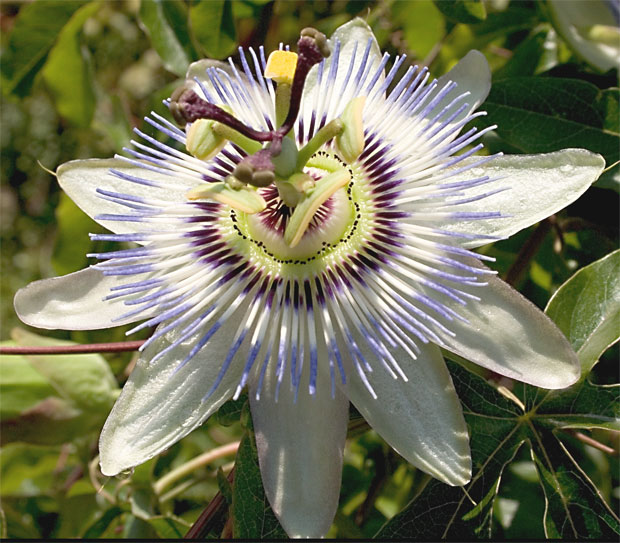You know you’ve been away from home too long when you come home to find strange flowers blossoming on your front doorstep:

I haven’t really decided whether I love or hate this flower, but I better make up my mind soon because the plant producing it is nearly four foot tall and loaded with blossoms.
Judging from its appearance, I’m mildly concerned that it may be an invasive species from another planet, which may explain why Skye keeps running up to the den window and growling half the night (of course, an alternative theory may be simply that the cat next door misses its owners and is constantly meowing in order to get some much-needed attention).
If it is an invasive species, it would seem to hold the potential to reproduce rapidly, judging from its rather bold display, though the large bumblebees that are so attracted to other flowers in the bed seem to purposefully avoid this particular flower. Perhaps it reminds them of Rapaccini’s Daughter, as it does me.

Looks to me like one of the many varieties of a passion vine blossom — something quite common down here in the part of California where I live…. Harmless, really … and some of them go on to become delicious fruits, too!
Then again, if you have seen one of the versions of the movie “Invasion of the Body Snatchers,” well, you may well wonder about their next move!
Rapaccini’s Daughter is a favorite short story of mine, but until now I had to imagine those poisonous flowers. No more imaginings; these are beautiful, but… Well, they do LOOK Evil!
I’m so inured to visual stimuli that it’s rare for me to think a photo stunning. Nonetheless, this one is.
I think maria is right.
I’d never heard of a Passion Flower until a few days ago, when one of our neighbors explained to me the origins of the vine’s name. Apparently, the flower represents the passion of Christ, from the lash (the tendrils) to the crown of thorns (those little spikey petals) to the three stigma (the three red stigma) and the five wounds (the yellow antlers). There was more, but my knowledge of botany and Bible is too limited for me to remember the rest.
So perhaps there is something to it’s otherworldly quality? At the very least, one has to respect a plant with such a venerable symbolic past. The name dates back to the 1700s.
Loren,
I can’t help with your mysterious flower, but I thought you might be interested in a recent NPR broadcast entitled “Poems for Daughters”.
There’s a link to the program on my own post at http://www.kevinlaurence.net/weblog/archives/000207.html.
I would have sent you an email, but couldn’t find an email address on In a Dark Time.
Reach for the herbicide or the secateurs, Loren. Or you’ll be in big trouble. If you don’t, and you want to see where you’re headed, Amazon has for only $4.95 the DVD version of Roger Corman’s 1960 classic, The Little Shop of Horrors”, featuring a very young Jack Nicholson and a very hungry (and bloodthirsty) plant.
http://www.amazon.com/exec/obidos/tg/detail/-/B00005B1YM/
Passion flower was my guess, too — so exotic, so evocative — & such a glorious photo!
These beauties seem to be cropping up elsewhere . . .
http://www.fragmentsfromfloyd.com/archives/002259.html
In another recent coincidence the local paper has twice featured the same flower I’ve featured the same flower that I featured in my blog after I’d just posted them.
This Saturday they posted a picture of exactly the same passion flower, with essentially the same description that you’d given earlier, Siona.
Realy lovely photo and I love that flower – never seen anything like it. ^^